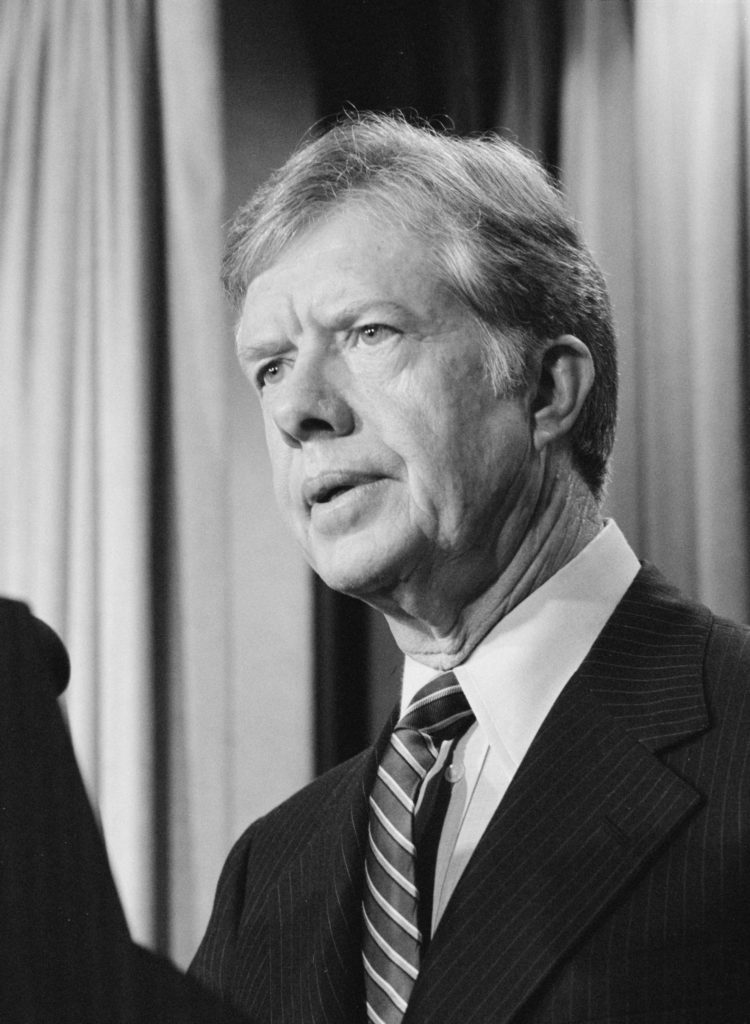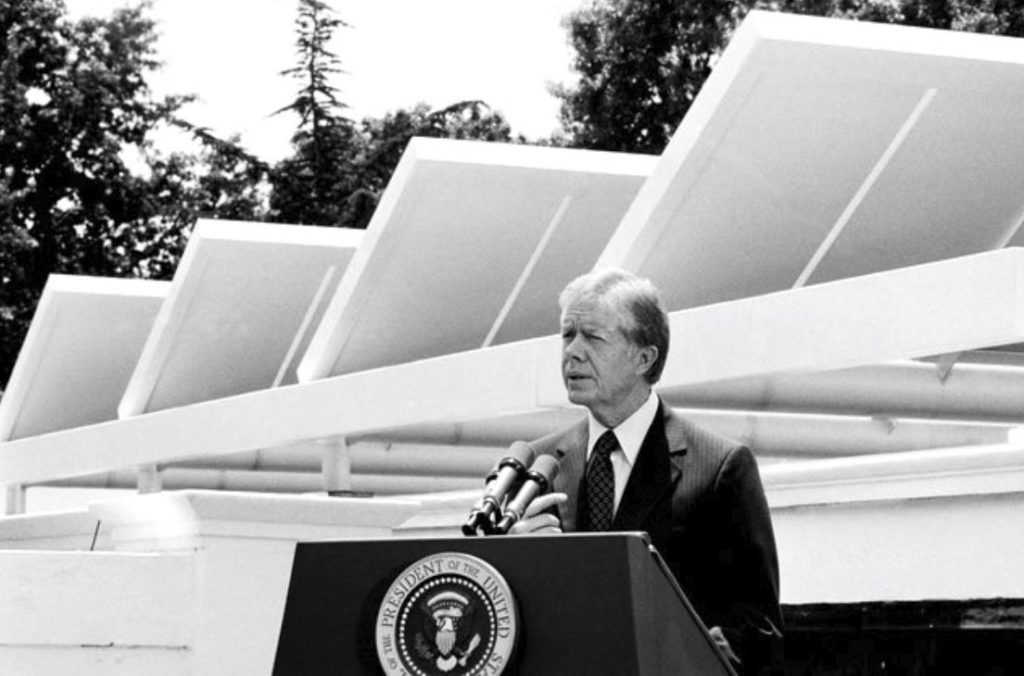Which American presidents did the most for the environment? The gold goes to Teddy Roosevelt and the silver—remarkably—to Richard Nixon. But the bronze medal for environmental presidents should go to the 39th President of the United States, Jimmy Carter.

James Early Carter Jr. was inaugurated as the U.S. President on January 20, 1977. Just four months later, on May 23, he addressed the Congress with a major policy agenda on the environment. Following the flurry of legislative activity during the late 1960s and early 1970s, Carter committed the executive branch to join the effort:
“Intelligent stewardship of the environment on behalf of all Americans is a prime responsibility of government. Congress has in the past carried out its share of this duty well–so well, in fact, that the primary need today is not for new comprehensive statutes but for sensitive administration and energetic enforcement of the ones we have. Environmental protection is no longer just a legislative job, but one that requires–and will now receive-firm and unsparing support from the Executive Branch.”
In his address, Carter outlined a seven-point agenda for his administration. He spoke to the need to control pollution and protect health; assure environmentally sound energy development; improve the urban environment; protect natural resources; preserve natural heritage (including wildlife); address the global environment; and improve implementation of environmental laws. The address is stunning in its detail, for example, listing 1303 miles of river to be added to the Wild and Scenic Rivers System and proposing an additional 20 for study.
Carter came to his environmental mission honestly. He grew up in Plains, Georgia, in a rural Baptist family that taught the Bible message of stewardship of the earth. As a farmer, he learned to understand that if you helped nature, nature helped you. He went off to the Naval Academy and became a nuclear engineer. During his active duty working on atomic submarines, Carter was sent to Canada to help when a nuclear power plant on the Chalk River near Ottawa had an accidental partial meltdown. He realized then how close modern society could come to nuclear disaster, a lesson that stayed with him in his approach to energy security—and nuclear weapons—as president.

By the end of his presidency, Carter had accomplished much of his agenda. He grew the EPA budget, despite a weak economy, and aggressively dealt with the Love Canal and Three Mile Island disasters. Carter combined a group of energy programs into the Department of Energy, and he established the first gas mileage standards for vehicles. In the closing months of his presidency, he worked with the lame-duck congress to pass and sign several important laws, including establishment of the Superfund idea, which has helped restore nearly 400 of the nation’s most toxic locations. He also signed the Alaska National Interest Lands Conservation Act, which provided 157 million acres of Alaskan lands protection as national parks and monuments, wildlife refuges and national forests.
Carter believed in renewable energy. His environmental message to congress, he said:
“The transition to renewable energy sources, particularly solar energy, must be made. But it will take time. Meanwhile we should satisfy our energy needs from existing sources, both fossil and nuclear, in a safe and environmentally acceptable way….. The decisions we make about energy in the next few years will influence the environment of our country for generations.”
To walk the talk, he installed solar panels on the roof of the White House. He turned down the thermostats in the building and told his staff to wear sweaters. In the midst of the energy crisis, he turned off the Christmas lights on the White House grounds.
Carter’s legacy as an environmental president is enormous, and even the ideas that he started and were abandoned later have come back strongly. For examples, almost as soon as Reagan moved into the White House, he had the solar panels taken down. They are back now, the work of George W. Bush and Barack Obama, and solar energy today across the country produces as much electricity as would 50 nuclear power plants.
References:
Carter, Jimmy. 1977. The Environmental Message to the Congress, Ma 23, 1977. The American Presidency Project. Available at: http://www.presidency.ucsb.edu/ws/?pid=7561. Accessed May 22, 2018.
Milnes, Arthur. 2011. Jimmy Carter’s exposure to nuclear danger. CNN, April 5, 2011. Available at: http://www.cnn.com/2011/OPINION/04/05/milnes.carter.nuclear/index.html. Accessed May 22, 2018.
Peak, Chris. 2015. Which presidents are the greenest in U.S. history? Nation Swell, September 16, 2015. Available at: http://nationswell.com/greenest-u-s-presidents/. Accessed May 22, 2018.
